How to Extend Your Growing Season in the UK: 8 Expert Techniques for Year-Round Harvests
Master the art of extending your growing season in the UK with these proven techniques. From cold frames and polytunnels to succession planting and winter-hardy varieties, discover how to enjoy fresh home-grown produce throughout the year, even in Britain's challenging climate.
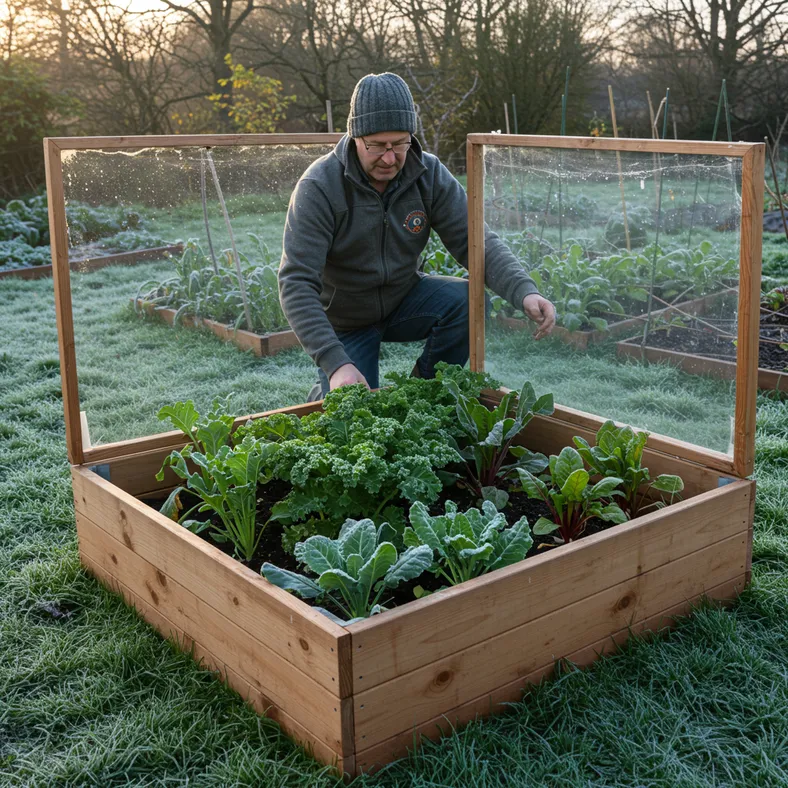
The British climate doesn't have to limit your gardening ambitions to just the warmer months. With the right techniques and a bit of planning, you can extend your growing season significantly, enjoying fresh home-grown produce well into winter and getting a head start in early spring.
From traditional methods like cold frames and cloches to modern approaches using polytunnels and succession planting, there are numerous ways to work with the UK's variable weather patterns. Whether you're a seasoned gardener looking to maximise your harvest or a beginner wanting to make the most of your growing space, these proven season extension techniques will transform your gardening success.
Understanding the UK Growing Season

The traditional UK growing season typically runs from late March to October, but this doesn't mean your garden has to remain dormant for nearly half the year. Understanding your local climate patterns is crucial for successful season extension.
In the UK, we experience a temperate oceanic climate with mild winters and cool summers. The Gulf Stream moderates our temperatures, meaning we rarely experience the extreme cold that affects continental Europe. This gives us a significant advantage when it comes to extending the growing season.
Key factors that affect your growing season include:
- First and last frost dates: These vary significantly across the UK, from early November to late March in southern England, to October through April in northern Scotland
- Microclimates: Your garden's specific conditions - south-facing slopes, sheltered corners, proximity to buildings or water features
- Daylight hours: Winter light levels drop significantly, affecting plant growth even in heated environments
- Soil temperature: Often more important than air temperature, soil needs to reach at least 6°C for most plants to actively grow
By working with these natural patterns rather than against them, you can successfully grow food throughout the year. The key is choosing appropriate techniques for each season and selecting plants that thrive in cooler conditions.
Cold Frames: The Traditional Season Extender
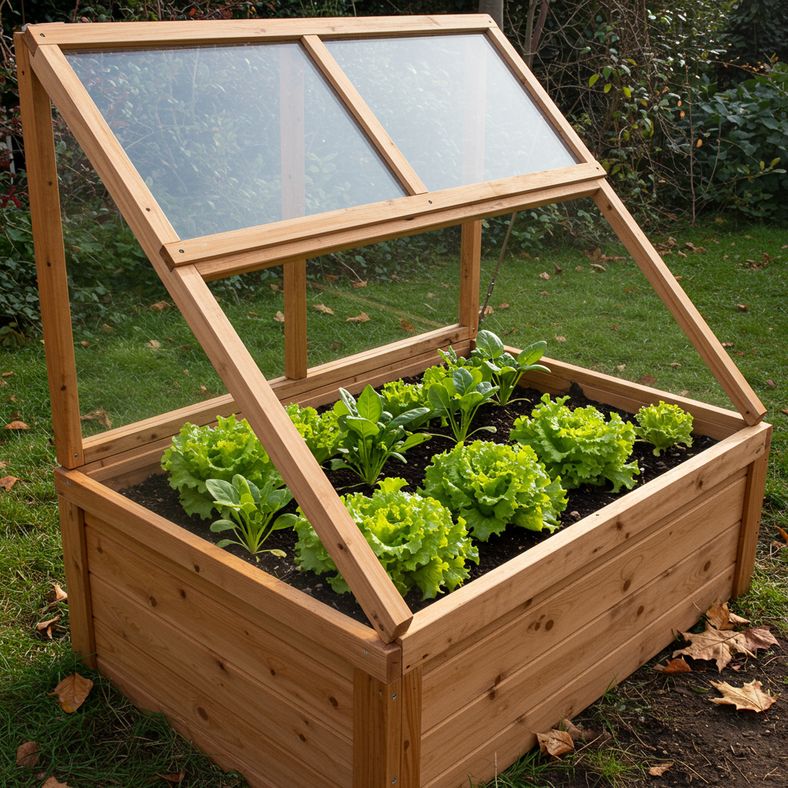
Cold frames are perhaps the most accessible and cost-effective way to extend your growing season. These simple structures act like mini-greenhouses, using solar energy to warm the soil and protect plants from harsh weather.
A cold frame consists of a bottomless box with a sloping transparent lid (called a light) that can be opened for ventilation. The sloping design maximises sun exposure while allowing rain to run off effectively.
Building Your Cold Frame
You can construct a cold frame using various materials:
- Wood: Cedar or pressure-treated timber for durability
- Recycled materials: Old windows, pallets, or even straw bales
- Purchased kits: Ready-made aluminium or polycarbonate versions
The ideal size is around 90cm wide by 60cm deep, with the back around 30cm high and front 20cm high. This slope angle (around 15 degrees) maximises winter sun capture.
What to Grow in Cold Frames
Cold frames excel at growing winter salads and hardy vegetables:
- Salad leaves: Little Gem lettuce, rocket, lamb's lettuce, winter purslane
- Asian greens: Pak choi, mizuna, mustard greens
- Herbs: Chives, parsley, coriander
- Root vegetables: Radishes, small carrots
In spring, cold frames are perfect for hardening off seedlings and getting an early start on warm-season crops.
Managing Your Cold Frame
Success with cold frames requires attention to ventilation and temperature control. On warm days (above 10°C), prop open the lid to prevent overheating. During extreme cold snaps, add extra insulation like old carpet or bubble wrap over the glass.
Polytunnels and Greenhouses for Year-Round Growing
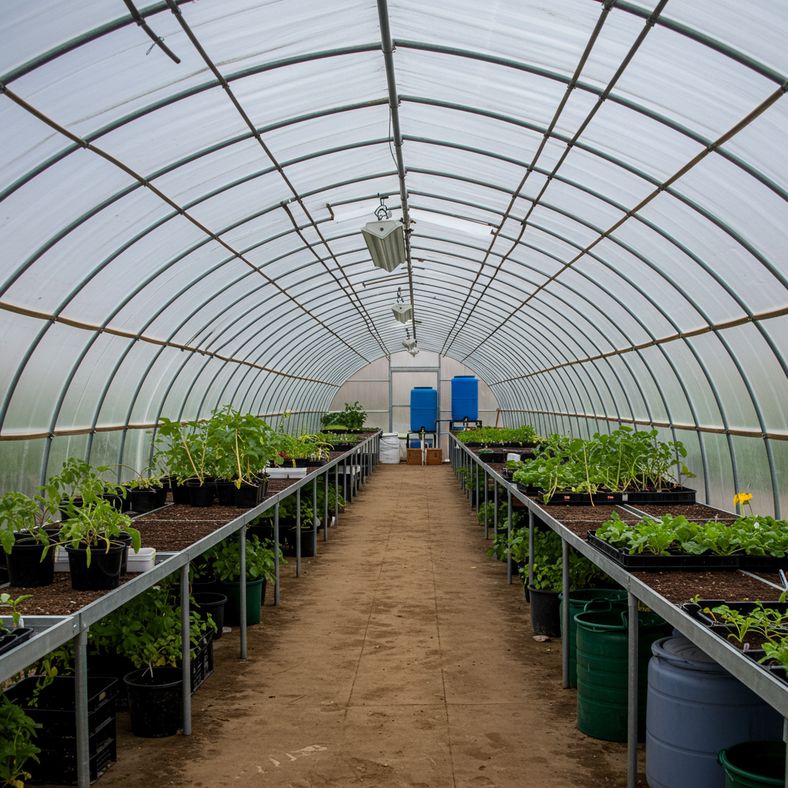
While cold frames extend the season, polytunnels and greenhouses can create a year-round growing environment. These structures provide much better climate control and protection from the elements.
Choosing Between Polytunnels and Greenhouses
Polytunnels are generally more affordable and offer excellent value for money. They're easier to assemble and can cover larger areas. The polythene covering needs replacing every 4-6 years but provides good insulation and light transmission.
Greenhouses are more permanent structures with better insulation properties. Glass or polycarbonate panels offer superior light transmission and longevity, though they require a larger initial investment.
Maximising Your Covered Growing Space
To make the most of your polytunnel or greenhouse:
- Install staging: Use different levels to maximise growing space
- Thermal mass: Place water barrels or stone slabs to store heat during the day and release it at night
- Ventilation: Automatic vent openers prevent overheating on sunny days
- Insulation: Bubble wrap insulation can be added in winter for extra warmth
Winter Growing in Protected Environments
With minimal heating (maintaining 4-7°C), you can grow:
- Leafy greens: Spinach beet, Swiss chard, winter lettuce varieties
- Brassicas: Savoy cabbage, kale varieties, sprouting broccoli
- Root crops: Autumn King carrots, turnips
- Mediterranean herbs: Rosemary, thyme, oregano
Even without heating, the protected environment can extend your season by 6-8 weeks at each end compared to outdoor growing.
Succession Planting for Continuous Harvests
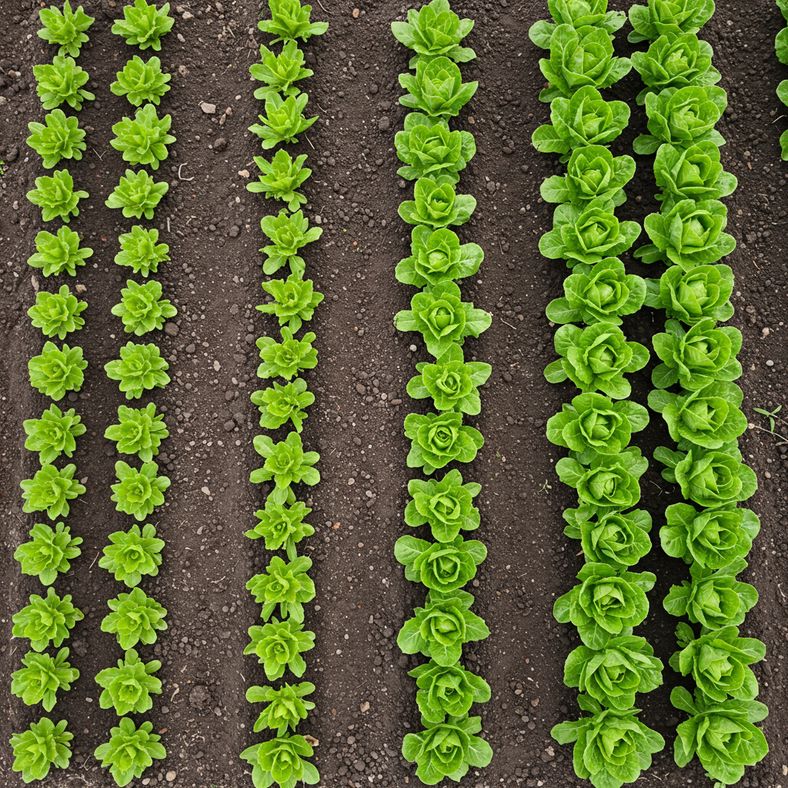
Succession planting is a fundamental technique for extending your growing season and ensuring continuous harvests. Rather than sowing all your seeds at once, you stagger plantings every 2-3 weeks to maintain a steady supply of fresh produce.
Planning Your Succession Schedule
Start planning your succession planting in late winter:
- Early spring (March): Start with cold-hardy crops like peas, broad beans, and salad leaves
- Late spring (April-May): Add quick-growing crops like radishes, dwarf French beans
- Summer (June-August): Continue with heat-loving crops and start autumn plantings
- Late summer (August-September): Focus on winter hardy varieties and quick-maturing crops
Best Crops for Succession Planting
Quick-maturing vegetables (30-60 days) are ideal for succession planting:
- Salad crops: Lettuce, rocket, spinach, Asian greens
- Root vegetables: Radishes, baby carrots, beetroot
- Herbs: Coriander, dill, basil
- Legumes: Mangetout, sugar snap peas
Calculating Planting Intervals
The interval between sowings depends on the crop's maturity time and how much you want to harvest:
- Fast crops (30 days): Sow every 1-2 weeks
- Medium crops (45-60 days): Sow every 2-3 weeks
- Slow crops (70+ days): Sow every 3-4 weeks
Keep detailed records of sowing dates and varieties to refine your timing for following years. Consider using a garden journal or smartphone app to track your plantings and harvest dates.
Winter-Hardy Vegetable Varieties
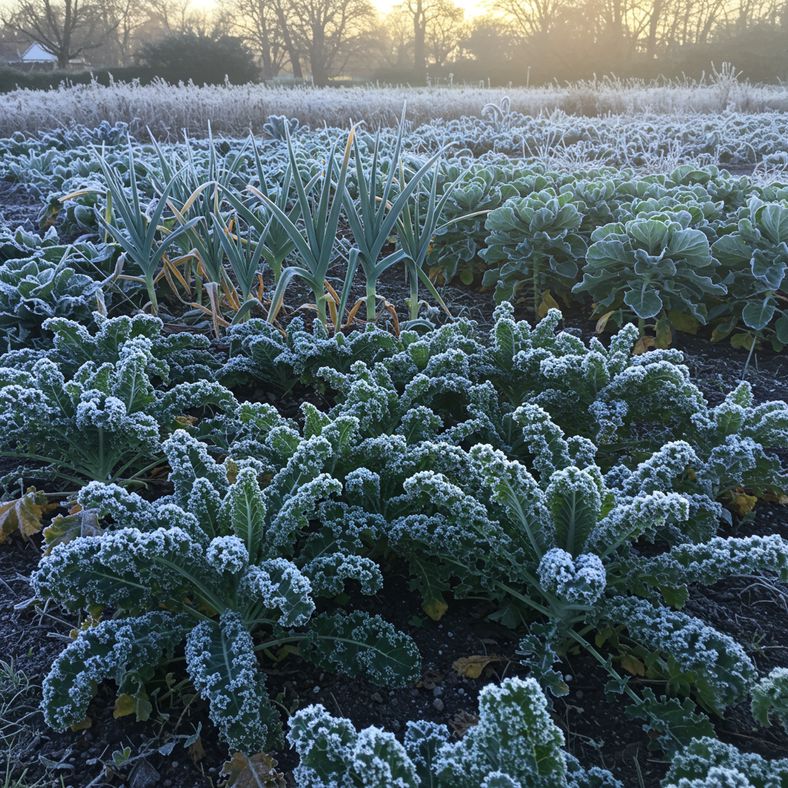
Selecting the right varieties is crucial for successful winter growing in the UK. Many vegetables have been bred specifically for cold tolerance and can withstand temperatures well below freezing.
Top Winter Vegetables for the UK
Brassicas are among the most cold-hardy vegetables:
- Kale: Varieties like 'Winterbor' and 'Redbor' can survive temperatures down to -15°C
- Brussels sprouts: Sweetens after frost, harvest from October to March
- Winter cabbage: 'January King' and 'Tundra' varieties store well in the ground
- Purple sprouting broccoli: Provides harvests from February to May
Root vegetables store well in the soil through winter:
- Parsnips: Actually improve in flavour after frost exposure
- Leeks: 'Musselburgh' and 'Giant Winter' are extremely hardy
- Winter radishes: Slower growing but more substantial than summer varieties
Salad crops for continuous winter harvests:
- Lamb's lettuce (corn salad): Thrives in cold conditions
- Winter purslane: Provides fresh greens all winter
- Land cress: A watercress substitute that tolerates frost
- Mizuna: Japanese green that regrows after cutting
Timing Winter Sowings
Most winter vegetables need to be established before the cold weather arrives:
- Late July to August: Winter brassicas, leeks
- August to September: Winter salads, Florence fennel
- September to October: Hardy herbs, garlic for next year's harvest
The key is getting plants to a good size before growth slows in November. Well-established plants will survive much better than weak seedlings.
Frost Protection Methods

Even hardy plants benefit from protection during severe weather. The UK's unpredictable climate means you should be prepared for unexpected frosts, especially in spring when tender plants are vulnerable.
Physical Protection Methods
Fleece and fabric covers are versatile and reusable:
- Horticultural fleece: Provides 2-4°C of frost protection while allowing air and water through
- Row covers: Lightweight fabric that can cover entire rows
- Individual plant protection: Cut plastic bottles, glass cloches, or paper collars
Mulching protects roots and soil:
- Organic mulches: Straw, leaves, or compost around plants
- Inorganic mulches: Gravel or stone for Mediterranean herbs
- Living mulches: Low-growing ground cover plants
Creating Microclimates
Strategic placement can provide natural frost protection:
- South-facing walls: Radiate stored heat and provide wind protection
- Under evergreen trees: Natural canopy protection
- Near water features: Water moderates temperature swings
- Raised beds: Warm up faster and drain better than ground level
Emergency Frost Protection
When unexpected frosts threaten:
- Water thoroughly: Moist soil holds more heat than dry soil
- Cover before sunset: Trap the day's accumulated heat
- Remove covers during the day: Prevent overheating and allow light penetration
- Use newspaper: Emergency protection for small plants
Remember that frost protection is most critical for tender plants and new growth. Established hardy plants often survive without protection.
Soil Preparation for Extended Seasons
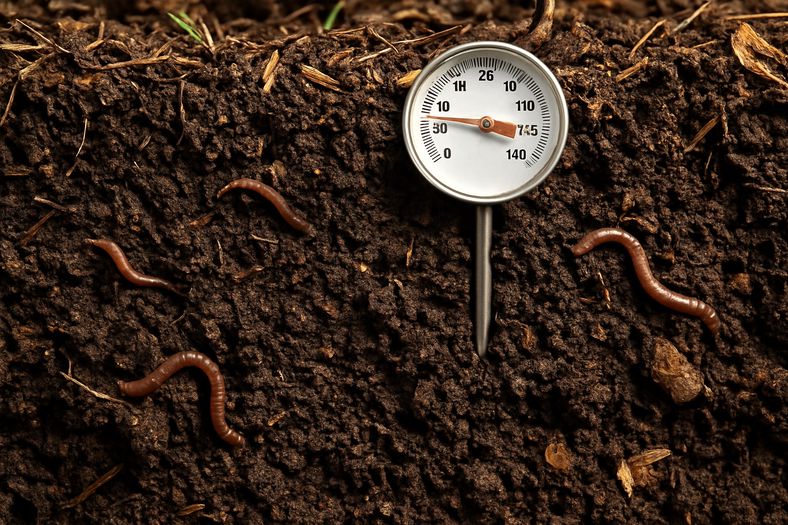
Healthy soil is the foundation of successful season extension. Well-prepared soil retains heat better, drains efficiently, and provides consistent nutrition throughout the extended growing period.
Improving Soil Structure
Good soil structure is essential for winter growing:
- Add organic matter: Well-rotted compost or manure improves drainage and water retention
- Avoid compaction: Use boards to walk on when soil is wet
- Consider raised beds: Warm up faster and provide better drainage
- Test soil pH: Most vegetables prefer slightly acidic to neutral soil (6.0-7.0)
Season-Long Nutrition
Extended growing requires sustained soil fertility:
- Slow-release fertilisers: Provide steady nutrition over months
- Compost applications: Apply 5-7cm layer annually
- Green manures: Grow nitrogen-fixing plants like winter field beans
- Liquid feeds: For container-grown plants, use diluted feeds regularly
For winter growing specifically, reduce nitrogen levels as plants grow more slowly and excess nitrogen can make them more susceptible to cold damage.
Managing Soil Temperature
Soil temperature is often more important than air temperature for plant growth:
- Dark mulches: Black plastic or dark fabric absorb heat
- Clear plastic: Creates greenhouse effect when laid flat on soil
- Thermal mass: Stones, water barrels, or concrete paths store and release heat
- Soil thermometer: Monitor soil temperature at root depth
Most vegetable seeds won't germinate until soil reaches 6-10°C consistently. Use these techniques to warm soil earlier in spring and maintain growing temperatures longer in autumn.
Planning Your Year-Round Garden
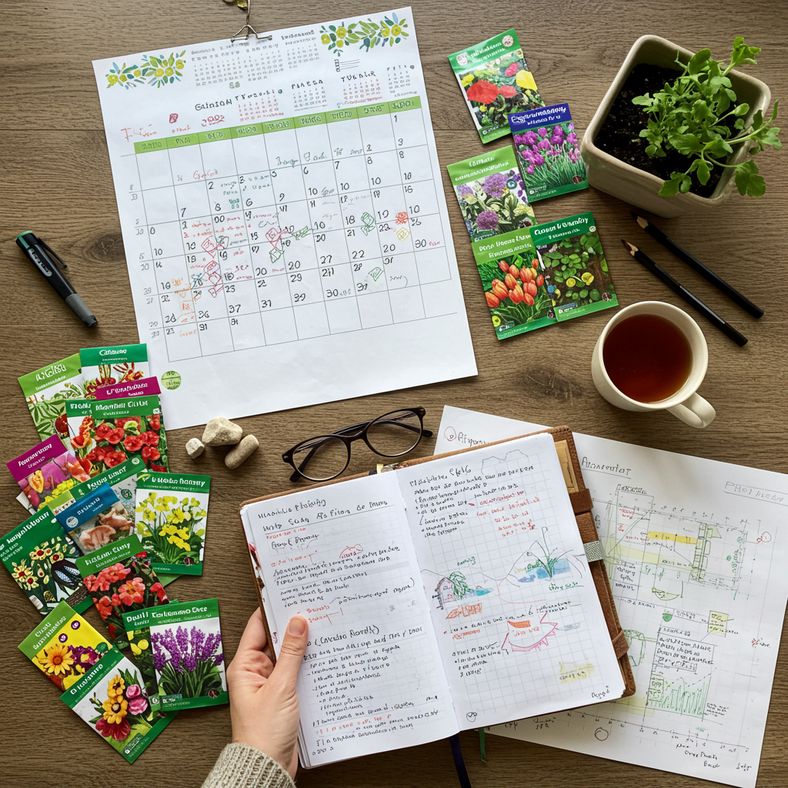
Successful season extension requires careful planning and record-keeping. A well-planned garden provides fresh produce throughout the year while making efficient use of space and resources.
Creating a Planting Calendar
Develop a month-by-month planting schedule tailored to your local conditions:
- January-February: Plan the year, order seeds, start early tomatoes under cover
- March: Sow cold-hardy crops, prepare beds, start succession plantings
- April-May: Plant out hardened seedlings, continue successions
- June-August: Summer maintenance, start winter crops
- September-October: Final plantings for winter harvest, prepare protection
- November-December: Harvest storage crops, maintain winter plantings
Space Management
Maximise your growing space through strategic planning:
- Companion planting: Grow compatible plants together
- Vertical growing: Use trellises, poles, and climbing varieties
- Interplanting: Quick crops between slower-growing plants
- Container growing: Move plants to optimal conditions
Record Keeping
Keep detailed records to improve each year:
- Planting dates: When you sowed and transplanted
- Harvest dates: When crops were ready
- Weather patterns: Frost dates, unusual conditions
- Variety performance: Which varieties worked best
- Pest and disease issues: What problems occurred and when
Digital tools like garden planning apps or simple spreadsheets can help organise this information and remind you of important tasks.
Essential Tools for Season Extension
Having the right tools makes season extension much easier:
- Soil thermometer: Monitor soil conditions for optimal planting
- Quality pruning secateurs: Essential for harvesting and plant maintenance
- Horticultural fleece: Multi-purpose frost protection
- Watering equipment: Gentle watering systems for delicate winter growth
- Hand tools: Trowel, hand fork, and dibber for close-spacing plantings
Disclaimer: This article contains Amazon affiliate links. We may earn a small commission from qualifying purchases at no additional cost to you.